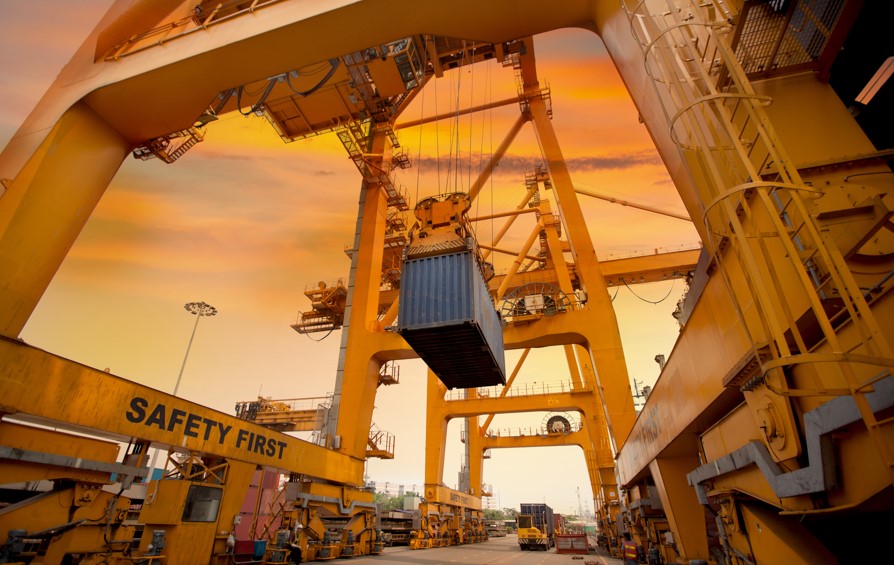Moving goods across the world takes skill, focus, and teamwork. Businesses must guide every shipment with care to reach the right place on time. Cargo forwarding services steer this process by planning routes, clearing customs, and tracking goods until they arrive. When joined with steady storage in a warehouse, they guard products and keep them ready for the next move. Together, they shape strong trade routes that help businesses grow, serve customers better, and move ahead with confidence.
Why Choose Freight Forwarding Services
Businesses count on these services to move goods quickly and correctly. Forwarders plan routes, guide customs steps, and watch every delivery. They clear the way so companies can focus on sales and growth instead of shipping worries.
They help companies:
- Save time through smart shipment planning
- Skip delays by fixing customs needs early.
- Cut costs with clever route choices.
- Track goods clearly from start to finish
Good teamwork and sharp timing keep goods flowing without confusion.
Core Role of a Freight Forwarder
A freight forwarder connects shippers with carriers. They don’t just move goods; they steer the whole journey. Their job mixes timing, paperwork, and careful planning so everything moves without a hitch.
Coordinating Multi-Modal Transport
Many goods travel by more than one route. Forwarders link air, sea, and road transport to shape smooth paths across borders. For example, a shipment may sail to port, ride a truck to a warehouse storage, and reach stores by van. Each switch needs focus and skill to stay on track.
Ensuring Timely Delivery
Forwarders chase every step of the journey. They fix route changes fast and make sure customs clear before time. Their watchful work keeps goods moving right on schedule.
Importance of Warehouse
Warehouse storage acts as a safe home for goods between journeys. It guards products and gives businesses control over stock. Proper storage turns chaos into calm and order.
Key Benefits of Storage Solutions
Well-kept warehouses:
- Shield goods from heat, damp, and harm
- Help teams count stock with ease.
- Support faster packing and sending.
- Stop mix-ups and waste.
Strategic Warehouse Placement
Where a warehouse sits changes everything. Sites near ports, airports, or highways shorten travel time and lower costs. Smart placement helps goods reach customers faster and smoothly. Together with forwarding, good storage keeps the whole process neat and reliable.
Features of Reliable Service Providers
The best logistics partners run with skill and care. They mix human sense with smart tools to deliver goods without delay or damage.
- Share live tracking updates.
- Handle air, sea, and land moves with care.
- Offer space that grows with your business
- Keep strict safety checks everywhere.
Use of Modern Technology
Technology gives forwarders sharper control. GPS trackers, digital dashboards, and barcode systems show every move in real time. With such clear data, managers plan better and act faster.
Safety and Security Measures
Strong providers guard goods like treasure. They set alarms, install cameras, and train staff to spot risk. They lock, seal, and monitor each shipment so nothing goes wrong. This care builds steady trust and keeps clients at ease.
Balancing Efficiency and Safety
Speed and care must walk together. Forwarders chase fast delivery but never forget safety. They lift, load, and move goods with firm control.
Warehouse teams stack neatly, manage air and light, and keep everything clean and dry.
Risk Management Practices
Every journey carries a few bumps with delays, storms, or mix-ups. Skilled providers spot danger early and plan backups. They reroute trucks, adjust timing, or call ahead to fix issues before they grow. Such quick moves protect goods and calm clients.
Sustainable Logistics for the Future
Modern logistics now thinks about the planet too. Smarter routes and green habits help nature while saving money.
Energy-Efficient Warehouses
Today’s warehouses shine with solar roofs, LED lights, and sensors that switch off wasteful power. These simple steps save energy and make the workplace cleaner.
Green Shipping Practices
Forwarders join loads to fill each vehicle, pick shorter routes, and choose cleaner fuel. These green habits shrink pollution and show real care for the Earth. Being eco-friendly now draws more business and wins customer respect.
Role of Communication in Forwarding Success
Clear talk keeps the whole chain alive. When everyone shares updates, things stay smooth and mistakes stay low.
Transparent Reporting
Good forwarders send quick updates about shipment status, customs checks, and delivery times. These open reports help clients relax and plan.
Customer Support Access
Fast help matters. A single call or chat should answer a question or fix a delay. Providers who listen and act quickly build stronger, lasting trust. Good communication doesn’t just move goods; it moves relationships forward.
Integrating Cargo Forwarding with Inventory Planning
Many companies now link forwarding and storage under one system. This link keeps goods visible, stock steady, and decisions clear.
Real-Time Inventory Updates
When warehouse and forwarding systems talk to each other, stock data updates every minute. Managers know what’s in store and what’s on the move without guesswork.
Predictive Planning
Smart tools can spot patterns in shipping and storage. With that, businesses know when to order, ship, or hold goods. Planning this way saves space, time, and money. When systems work together, supply chains glide instead of grinding.
Overcoming Common Logistics Challenges
Even strong systems meet hurdles now and then, rough weather, tight customs, or storage crunches.
Planning Ahead
Planning early beats half the battle. Forwarders confirm bookings, check papers, and secure warehouse slots long before deadlines. This foresight keeps goods rolling smoothly.
Partner Coordination
Shipping joins many hands with suppliers, drivers, handlers, and clients. When all share updates, handovers go right and confusion stays away. Each part fits neatly when everyone stays in sync. With teamwork and care, even tricky shipments finish without stress.
Future of Global Forwarding
Trade keeps growing, and so does the need for quick, safe movement. The best forwarders now blend smart tech, skilled teams, and eco goals. They track goods through live maps, predict hold-ups before they happen, and guide each load with skill. Warehouses now store more, move faster, and waste less. Together, they push the trade world forward.
Final Thought
Trade never sleeps, and businesses must keep pace with growing demand. Smart logistics turn complex routes into smooth journeys that save time and money. Cargo forwarding services lead this effort by handling every step with order and precision. With the right partner, companies gain trust, deliver faster, and reach across borders with ease. Choosing strong forwarding and storage systems today builds lasting trade ties, sharper results, and a future where goods travel swiftly and safely.
Frequently Asked Questions
1. What do freight forwarders actually do?
Freight forwarders guide, plan to control the movement of goods from start to end. They handle customs, choose routes, to track every shipment so it reaches the right place on time.
2. Why is a warehouse important in shipping?
Warehouse guards goods, keeps them sorted, to prepares them for travel. It helps teams count, pack, to send items smoothly while reducing loss to keep supply lines strong.
3. How can I choose a reliable forwarding partner?
Find a partner who shares updates clearly, tracks every move, to manages transport with care. A good one listens, acts fast, or delivers without mix-ups or long delays.
4. What are the main benefits of using forwarding or storage together?
When forwarding to storage, work as one, goods travel faster, stay safe, to remain easy to follow. This teamwork saves money, prevents mistakes, to keeps business running smoothly.




